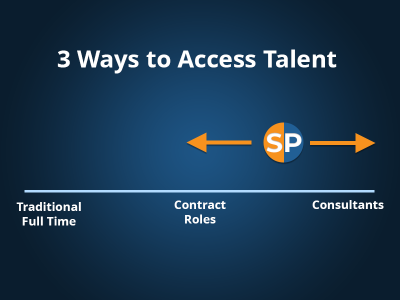Covid has shaken up, or some might say, evolved the entire workforce with remote and hybrid becoming new ways of working. As a result, in a post Covid world, there is a shift occurring and a new question is being asked in many organizations – What exactly is needed from the workforce to achieve organizational objectives? Companies are now looking at what outputs are required versus how many full time hires we need. The lines are blurring between full time employees, contractors and consultants. Below are the three ways to access talent today. Tomorrow things may look a lot different.
Traditional Full-Time Hires
Is the idea of the traditional full time hire becoming less relevant today?
Traditional full time hires are typically done through various channels such as job boards, search firms, career fairs, and networking events. This method is suitable for filling permanent positions. If you’re preparing to hire new employees while keeping your bottom line in check, you need to consider which roles require a full-time employee and which roles might be best filled as a contract role or external consultant.
Contract Roles
Talent marketplaces and networks have become increasingly popular for accessing talent in recent years. These platforms connect organizations with contractors, freelancers and independent consultants, who offer their skills and services on a project-by-project basis. These platforms provide access to a wide range of talent and offer flexibility in terms of project duration, scope, and budget.
Traditional Consultants
This approach involves contracting external consultants or firms to perform specific tasks or projects. This approach can be beneficial when specialized skills or expertise are required for a particular project or when the organization lacks the resources or capacity to handle certain tasks in-house.
Each of these methods has its advantages and disadvantages, and the most suitable approach will depend on factors such as the specific requirements of roles or projects, the organization’s budget and resources, and its long-term talent acquisition strategy. The lines are blurring on all these ways to access talent and an organization cannot look at each method as independent silos. It is a fluid model and depending on the quarter, year, or list of key projects, the ratio may be significantly different.
Well, this is what I think…I welcome your thoughts on this topic. Email me at kevin@seasonedpros.ca.

